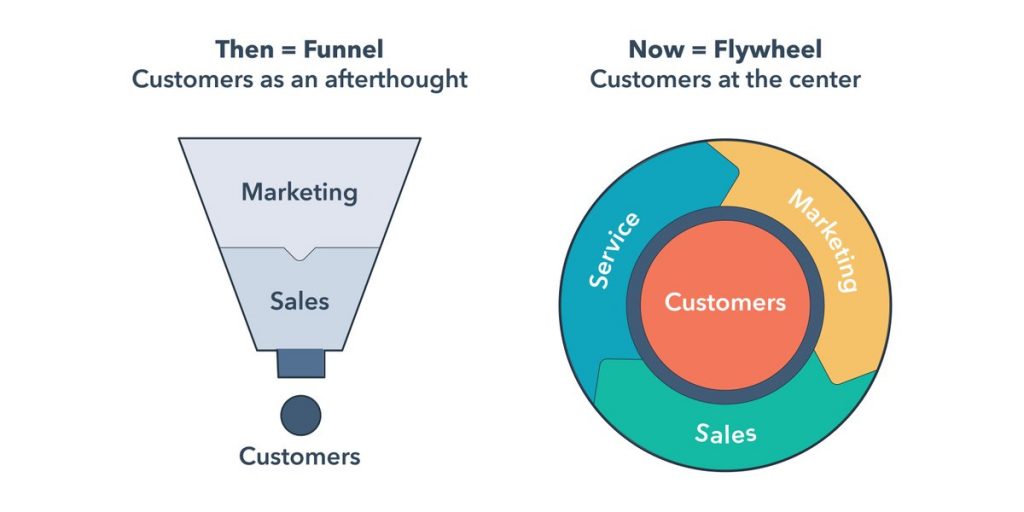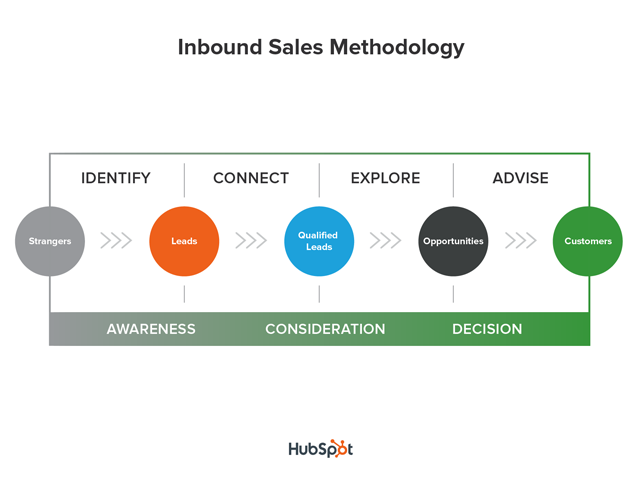Why Value Selling is the solution to B2B enterprise software sales
Selling software to businesses has changed a lot in the past 5 years. In the old days, sales people could approach a prospect, do a demo of the software, give a couple of examples of how it’s worked out for other similar customers in the past, then whip out the 12 month contract to close the deal before retiring to the bar. OK, maybe it wasn’t that simple - but for the majority of sales people, they at least knew what they were selling when they were meeting with a customer. These days, it’s a little more complicated. Most modern software systems are now based in the cloud. SaaS (Software as a Service) is now the preferred solution for most businesses. Instead of software to solve unique problems, more and more we are seeing investment in platforms - platforms for marketing, platforms for sales, platforms for business growth…
Selling software (SaaS) to businesses
Chances are, depending on what customer you’re talking to, your software does different things for different people… Depending on the problem, you either have a pre-existing configuration (solution) that’ll solve that problem, or you can go back to your team to create one if it’s worth the effort to do so. There are no technical limitations on how many products you can offer - and once salespeople get a sense that they can tailor solutions to fit any customer, it sometimes leads them to sell solutions that the tech team may not even be able to deliver without significant investment. This means using time and resources that would otherwise be used to serve a wider market - resulting in a lack of focus in the company and often a decline in sales as you disappear down the rabbit hole of custom solutions for ever more demanding customers.
The result for many B2B software sellers is that what was once a streamlined, profitable business becomes a sprawling compendium of expanding product lines, confusing pricing and declining sales as customers begin to look elsewhere for simpler, more easily understood solutions.
In terms of business growth, you could call this the ‘middle-aged spread’ - it’s the uncomfortable muffin top hanging over your jeans, an indication of the many excesses and late nights you’ve had during the early stages of your business as you grew from a hustling startup to a global software company.
What do you sell?
Nothing is set in stone when it comes to cloud software. Salespeople are encouraged to sell products based on packages and different price points, but when it comes to features and value, things can get pretty confusing in the world of SaaS.
Enterprise SaaS sales present a unique problem for sales people and business owners. Nowadays, the most valuable technology companies don’t just sell products, they sell something more.
Build what you Sell, Sell what you Build
On average, a customer can go 57% of the way through the buyer’s journey before even talking to a sales person. Smart companies use this as an opportunity to educate their prospects on the kinds of problems and challenges they help to solve. They’re focused on value, not features. Not only that, if they’re really smart, they’re using technology to get to know their prospects during the initial stages of the buyer journey when they have very little interaction but lots of data on prospects.
Successful sales strategies involve ‘active buyers’ - people who have already expressed an interest in their products or services. Your sales process engages prospects in search of solutions to unique problems, but more importantly, it presents value at every step of the buyer journey.
The value your potential customers are searching for is common to a small subset of customers in a market you’re targeting for business growth. Maybe these prospects are looking for a way to reduce churn in their business. Maybe they’re looking for a way to save time on a particular aspect of their manufacturing process. Perhaps they’ve heard that a competitor has learned how to deliver customer service more efficiently and they need to do the same, quickly…
In successful sales, whatever value the prospect is searching for is contained in the value you offer your customers.
Value Selling: Focus on value for the customer
Successful software (SaaS) companies focus on the customer.
If you’re Value Selling, the problems are wide and varied, but your market is clear and precise - your ideal buyer profile is well known, and what that buyer gets out of working with you is understood, or at least anticipated by the time you get your first sales call.
Access to information has completely changed the conversation. A lot of people will begin selling by talking about their product. They’ll describe the features and functionality, go through some screenshots, maybe even walk the prospect through a demo. ‘You need this product!’ they say, ignoring the customer who has the look of someone who has heard it all before.
Do you sell Products or something more intangible?
Product: noun
- an article or substance that is manufactured or refined for sale e.g. "food products"
- a thing or person that is the result of an action or process.
A product is traditionally defined as something we provide a customer to meet their need, in exchange for money, goods or services. Yet when you look at the top SaaS companies in 2018, none of them offers something tangible to which you can apply the normal definition of ‘Product’.
SaaS companies in the top 20 invariably focus on value for the customer, the flexibility of their platform to fit the needs of every challenge, and outcomes that are linked to the innovative collaboration between the customer and the platform providers to achieve their goals.
All of these companies place the emphasis on their relationship with their customer, and the value they deliver to that customer by whatever means available to them through the use of the SaaS platform in different ways.
Platforms are a way to deliver value at scale:
Take a quick look at Salesforce.com as an example. After a 20 minute search on the Salesforce website, you’ll find it’s hard to put a finger on what exactly they’re selling. As a platform, they pretty much do it all. Salesforce offer a multi-tenant, scalable and easily upgraded cloud solution and have led the way in redefining how and what we sell to our customers.
Hubspot present a similar value proposition - with a successful Inbound Marketing platform already, and their new Sales Platform offering everything you need for Inbound Sales, Hubspot recently introduced their Customer Success platform - resulting in an all in one platform that any growing business can use to serve value to customers.

If you’re a business owner looking for a solution to a particular challenge or goal, these days you can dip into the cloud and pull out everything you need to run your business. It’s a confusing market with thousands of options to explore, and once you’ve chosen your stack, chances are you’ll be swapping different products in and out as you build your own unique technology stack that serves your particular customer in the best possible way.
Every business innovates on combinations of technology and cloud services to deliver value to customers. SaaS solutions offer value by fitting into this customer focused approach as seamlessly as possible - aligning with the delivery of value across the buyer journey.
Selling B2B software and Enterprise SaaS
Successful software (SaaS) sales in B2B have one thing in common: when a customer buys your solution, the value is scalable.
With Enterprise SaaS solutions, you can mix and match solutions to suit every particular problem a customer might have. There’s rarely a problem a cloud solution can’t solve - with enough developers, a cloud solution can be applied to any challenge. With all this choice, It falls to the business owners to decide which applications are viable and profitable for their market - pulling developers off core activities to work on a bespoke application of the platform for a particularly demanding customer has scuppered many successful businesses whose eyes were taken off the ball.
Have you lost the run of yourself?
Scalable cloud solutions can present a problem, or an opportunity, depending on how you deal with the potential. If your sales team are selling licenses based on the promise that your developers can get your platform to do anything - “you name it!” - chances are you’ve lost the run of yourselves. If your product development team have released more than one or two products in the last quarter, it’s very likely they’re using your platform as a playground for cutting-edge application development - this is fun and challenging work but may not serve your market in the long term.
Selling value that scales
The value of selling Enterprise SaaS is in providing access to a platform that can be configured in a particular way to offer value to any business in your market. That’s why Customer Success has become such an important part of the buyer journey. Once a customer has purchased a license or signed up for a subscription to your platform, they can work with your team or self-serve to the point where the application of your technology fits their unique needs as a business. Every customer is free to access and use what is valuable to them in order to solve their own particular problems. Every customer is different, and so is the problem they’re trying to solve. The easier you can make it to solve the customer’s problem, the happier they are.
Selling value, not products
Better sales conversations require you to sell more than a product, you need to sell value every step of the way.
Inbound Selling
If you follow an Inbound Selling methodology, salespeople begin speaking with active buyers by talking about the challenges and obstacles they face as well as the goals and pressures in their business. The more they can learn in the explore and connect phases of the sales process, the more likely those salespeople are to be considered Trusted Advisors and valuable collaborators in finding solutions to those challenges. After all, how can you talk about value when you have yet to find out what matters most to your customer?

When the customer’s problems and challenges are understood and agreed upon, you can sell a solution, or more importantly, you can talk about the value you’re going to deliver for your customer. When you deliver value for your customer, this inversely brings more value into your business - it’s a mutual gain for both customer and seller that is often overlooked in legacy sales processes that prioritise quick wins and target attainment over the delivery of value, building relationships and gaining trust.
How do you sell value?
- Know what value means to your customer
- Get to know your customers’ business, talk about their challenges, obstacles and goals before talking about solutions
- Collaborate with your customer to identify their needs
- Align their challenges with solutions your platform can offer*
- Agree upon the value you can deliver
*Make sure it’s a fit! Don’t do bespoke development that doesn’t serve a wider market in your niche.
According to Jill Konrath: To win more sales, stop selling. When people feel like they’re being sold, they put up barriers.
“The way to win sales, and customers, is to stop selling products, and start selling value.”
What about you? What value do you sell?

